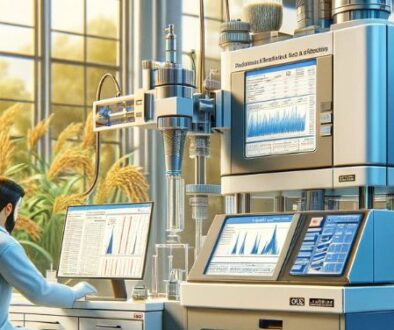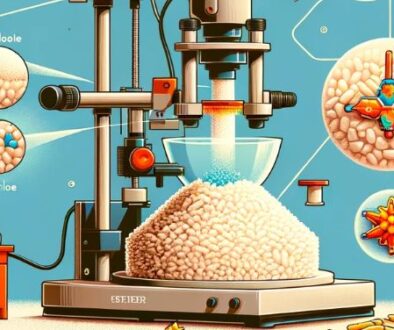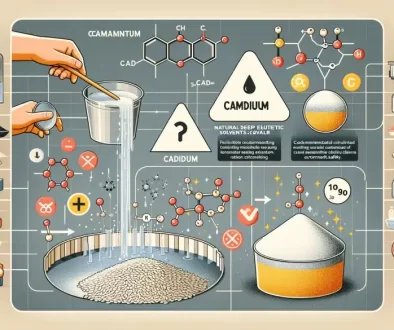Eco-Physiological Responses Of The Declining Population Spartina Anglica To N And P Fertilizer Addition Eco-Physiological Responses Of The Declining Population Spartina Anglica To N And P Fertilizer Addition
Analyzing the impact of N, P, and NP fertilizers on growth and physiological responses of declining Spartina anglica populations in coastal zones.
By adding N fertilizer, P fertilizer and NP compound fertilizer at different gradient levels to the naturally declining population of the exotic plant Spartina anglica, the differences in growth indicators of Spartina anglica and its physiological and ecological responses were analyzed. The results showed that after the addition of N and P, the plant height of the Spartina population increased to varying degrees, and the fertilizer effects were in order of N fertilizer, P fertilizer, and NP fertilizer; the number of leaves, the number of main roots, and the total biomass all increased significantly (p< 0.05). Except for N fertilizer, the leaf area and thickness of other treatments were not significantly different from the control. The addition of the three fertilizer sources significantly increased the photosynthetic rate of naturally declining populations of Spartina (p<0.05); both N and NP fertilizers had the most significant effects at high concentrations, but P fertilizer had the strongest effect at medium concentrations; the photosynthetic rates were respectively Compared with the control, they increased by 19.08 ¦Ìmol¡¤m-2¡¤s-1, 11.23 ¦Ìmol¡¤m-2¡¤s-1 and 15.47 ¦Ìmol¡¤m-2¡¤s-1; after 14 days of fresh water flooding, the addition of fertilizer sources caused the population of Spartina to naturally decline. The SOD and POD enzyme activities were enhanced; the addition of medium concentration N and medium concentration P increased the SOD activity most significantly, increasing by 320.74unit¡¤g-1 and 134.54unit¡¤g-1 respectively compared with the control; the addition of high-concentration N and high-concentration NP fertilizers The most significant increase in POD enzyme activity. The addition of N fertilizer can significantly improve the growth and physiological characteristics of naturally declining Spartina populations. It can be inferred that the decline of Spartina populations is related to the limitation of N nutrition in soil nutrition in my country’s coastal zones.
Research Methodology and Fertilizer Application
In recent studies, the effect of nitrogen (N) fertilizer, phosphorus (P) fertilizer, and their compound (NP) on the naturally declining population of the exotic plant Spartina anglica has been meticulously analyzed. The objective was to understand the impact of these fertilizers on the growth metrics, physiological, and ecological responses of Spartina anglica. This research offers invaluable insights into the potential remediation strategies for the conservation of Spartina anglica populations, which are facing decline in various coastal zones.
Growth Indicators and Fertilizer Efficacy
The methodology involved the application of N, P, and NP fertilizers at varying gradient levels to assess their influence on the plant’s growth indicators such as plant height, number of leaves, main roots count, and overall biomass. The findings indicated a positive correlation between the application of these fertilizers and the growth of Spartina anglica. The impact of the fertilizers on plant height was observed in the following order: N fertilizer showed the most significant effect, followed by P fertilizer, and lastly NP fertilizer. This enhancement was not only limited to plant height but also extended to a significant increase in the number of leaves, main roots, and total biomass, all showing statistically significant growth (p<0.05).
Photosynthetic Rate and Fertilizer Concentrations
Interestingly, except for the treatment with N fertilizer, the leaf area and thickness in other treatment groups did not exhibit any significant deviation from the control group. However, the application of these fertilizers markedly improved the photosynthetic rate of the declining populations. The effect of N and NP fertilizers was pronounced at higher concentrations, whereas P fertilizer demonstrated the most substantial impact at medium concentrations. The increases in photosynthetic rates were quantified as 19.08 µmol·m-2·s-1 for N, 11.23 µmol·m-2·s-1 for P, and 15.47 µmol·m-2·s-1 for NP, each compared with the control.
Enhanced Enzyme Activity through Fertilization
Additionally, a 14-day freshwater flooding experiment revealed that the inclusion of these fertilizers significantly bolstered the activities of superoxide dismutase (SOD) and peroxidase (POD) enzymes, indicative of enhanced stress tolerance. Notably, medium concentrations of N and P fertilizers led to a considerable increase in SOD activity, with increases of 320.74unit·g-1 and 134.54unit·g-1, respectively, compared to the control. High concentrations of N and NP fertilizers were found to be the most effective in increasing POD enzyme activity.
Conclusions: N Fertilizer’s Role in Spartina Population Recovery
These results unequivocally suggest that the addition of N fertilizer, in particular, can substantially improve the growth and physiological characteristics of naturally declining Spartina populations. It can be inferred from the study that the decline of Spartina populations in China’s coastal zones is closely associated with N nutrition limitation in the soil. This research underscores the critical role of targeted fertilizer application in mitigating the decline of Spartina anglica, thereby contributing to the ecological restoration and conservation efforts in coastal ecosystems. The findings not only illuminate the path for future research in plant ecology and conservation but also provide practical guidelines for managing the health and sustainability of Spartina anglica populations.
For futher details of this article and research, feel free to contact our team for assistance. Original research was done by LI Hong-Li, ZHI Ying-Biao, ZHAO Lei, AN Shu-Qing, DENG Zi-F, ZHOU Chang-Fang, GU Shu-Ping, Li Hong-Li, Zhi Yingbiao, Zhao Lei, An Shuqing, Deng Zizi, Zhou Changfang, Gu Shuping
About ETprotein:
ETprotein, a reputable plant protein vegan protein Chinese factory manufacturer and supplier, is renowned for producing, stocking, exporting, and delivering the highest quality organic bulk vegan protein and plant proteins. They include Organic rice protein, clear rice protein, pea protein, clear pea protein, oat protein, watermelon seed protein, pumpkin seed protein, sunflower seed protein, mung bean protein, peanut protein, various of plant peptides etc. Their offerings, characterized by a neutral taste, non-GMO, allergen-free attributes, cater to a diverse range of industries. They serve nutraceutical, pharmaceutical, cosmeceutical, veterinary, as well as food and beverage finished product distributors, traders, and manufacturers across Europe, USA, Canada, Australia, Thailand, Japan, Korea, Brazil, and Chile, among others.
ETprotein specialization includes exporting and delivering tailor-made protein powder and finished nutritional supplements. Their extensive product range covers sectors like Food and Beverage, Sports Nutrition, Weight Management, Dietary Supplements, Health and Wellness Products, and Infant Formula, ensuring comprehensive solutions to meet all your protein needs.
As a trusted company by leading global food and beverage brands and Fortune 500 companies, ETprotein reinforces China’s reputation in the global arena. For more information or to get a free sample of their protein products, please contact them and email sales(at)ETprotein.com today.












